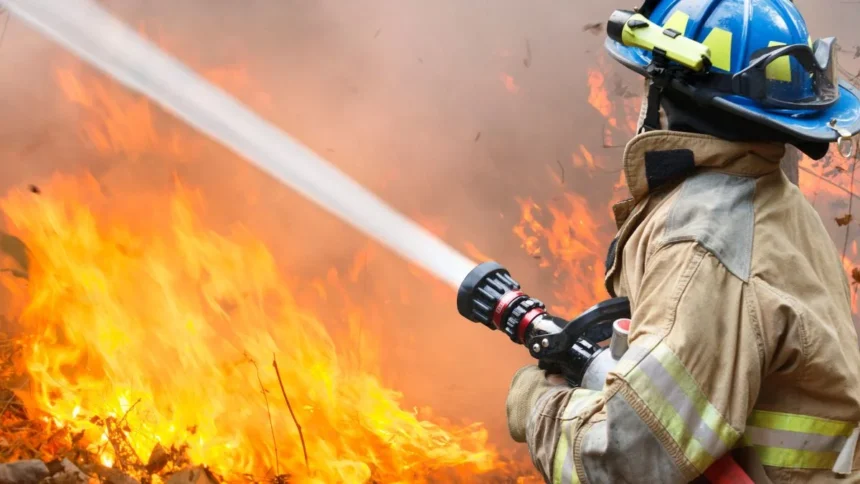California has long been known for its breathtaking landscapes, from lush forests to vast deserts. However, a recurring and alarming feature of the state’s natural environment is its vulnerability to wildfires. Each year, wildfires ravage thousands of acres of land, threatening homes, wildlife, and the delicate balance of ecosystems. This article delves into the causes of wildfires in California, their devastating impacts, and potential future solutions to mitigate their frequency and severity.
The Causes of Wildfires in California
Wildfires in California are not a new phenomenon; however, several factors contribute to their increasing frequency and intensity. These causes can be divided into natural and human-induced categories.
- Climate Change
One of the primary contributors to the intensifying wildfire season in California is climate change. Rising temperatures, prolonged periods of drought, and decreased rainfall have made California’s landscape more susceptible to fire. As temperatures soar and moisture levels drop, vegetation such as grass and trees become drier, making them more prone to ignition. The combination of these factors creates the perfect environment for wildfires to ignite and spread uncontrollably. - Lightning Strikes
Lightning strikes are another natural cause of wildfires in California. Dry thunderstorms, which occur when there is little rainfall accompanying lightning, can ignite fires that spread rapidly in dry conditions. While lightning-induced fires make up a significant portion of wildfire incidents, they are often less frequent than human-caused fires. - Human Activity
Human activity is responsible for a substantial number of wildfires in California. Careless behavior such as discarded cigarette butts, unattended campfires, fireworks, and faulty electrical equipment are common ignition sources. Additionally, construction and agricultural practices that involve clearing land with fire often lead to accidental fires. In fact, human-caused fires account for a large percentage of the wildfires that devastate California each year. - Invasive Species
The presence of invasive plant species, such as the highly flammable cheatgrass, exacerbates the spread of wildfires. These species thrive in California’s dry climate and provide ample fuel for fires to spread quickly across large areas.
The Impact of Wildfires in California
The impact of wildfires in California is far-reaching, affecting not only the environment but also the economy and public health.
- Environmental Damage
Wildfires can cause irreversible environmental damage. The destruction of vast swaths of forest leads to habitat loss for wildlife, including species that are already endangered. In addition to the loss of flora and fauna, wildfires can lead to soil erosion, which increases the risk of flooding and landslides in the aftermath. Furthermore, the destruction of trees contributes to the loss of carbon sequestration, exacerbating climate change. - Economic Consequences
The economic impact of wildfires in California is staggering. Firefighting efforts cost billions of dollars each year, with expenses for personnel, equipment, and logistics soaring during peak fire seasons. Moreover, the destruction of homes, businesses, and infrastructure leads to long-term economic losses. The tourism industry, which relies on California’s natural beauty, also suffers from the widespread destruction of forests and parks. - Public Health Concerns
Wildfires pose significant health risks, particularly for those with respiratory conditions. The smoke from fires can travel hundreds of miles, degrading air quality and posing a threat to public health. Fine particulate matter from wildfire smoke, known as PM2.5, can penetrate deep into the lungs, causing respiratory problems, heart conditions, and even premature death. Vulnerable populations such as children, the elderly, and those with pre-existing health conditions are particularly at risk. - Displacement of Communities
Thousands of residents are displaced each year due to wildfires. In addition to the immediate threat to life and property, the long-term consequences of being forced to leave one’s home include emotional distress, financial hardship, and the difficulty of rebuilding lives. Emergency shelters and evacuation centers are often overwhelmed, and displaced families face challenges in finding new housing and employment.
Future Solutions to Address Wildfires
While wildfires in California are inevitable due to the state’s climate and geography, there are several strategies that can help mitigate their impact and reduce their frequency.
- Fire-Resistant Building Materials
One solution that can help protect communities from wildfires is the use of fire-resistant building materials. New homes and structures in fire-prone areas can be built with materials that are less likely to catch fire. This includes using non-combustible roofing, fire-resistant siding, and installing ember-resistant vents to prevent embers from entering homes. - Forest Management and Controlled Burns
Proper forest management is key to preventing large-scale wildfires. Thinning forests by removing dead trees and overgrown brush can reduce the amount of fuel available for fires. Additionally, controlled or prescribed burns can be used to remove excess vegetation in a controlled environment. This method has been shown to reduce the risk of catastrophic wildfires by maintaining healthier forests and reducing the likelihood of large, uncontrolled blazes. - Public Education and Awareness
Educating the public about wildfire prevention and safety is crucial. Programs that teach residents how to create defensible spaces around their homes, properly dispose of fire-starting materials, and be prepared for evacuation can save lives. Awareness campaigns that promote responsible behavior, such as properly extinguishing campfires and avoiding the use of fireworks in dry conditions, can help reduce the number of human-caused fires. - Technological Innovations
Advances in technology may play a significant role in preventing and managing wildfires. Drones equipped with thermal imaging cameras can help detect fires in their early stages, enabling faster response times. In addition, artificial intelligence can analyze weather patterns and vegetation data to predict where fires are likely to occur. These tools can help firefighting teams allocate resources more effectively and prevent the spread of wildfires. - Collaboration and Policy Change
Finally, comprehensive policy changes and collaboration between local, state, and federal agencies are necessary to address the wildfire crisis. Increased funding for fire prevention programs, improved building codes, and better coordination between agencies can help reduce the overall risk. Additionally, policies that focus on reducing greenhouse gas emissions can help mitigate climate change, which in turn may reduce the severity of future wildfires.
Conclusion
Wildfires in California are a complex and growing issue, with numerous contributing factors ranging from climate change to human activity. The consequences of these fires are devastating, affecting communities, the environment, and public health. However, through a combination of better forest management, fire-resistant infrastructure, public education, technological innovations, and comprehensive policy changes, there is hope for reducing the frequency and impact of future wildfires. As California continues to grapple with this ongoing challenge, collaboration and proactive measures will be key to safeguarding its landscapes, residents, and ecosystems from the destructive power of wildfires.
Get more info: https://www.timelinetale.com/







